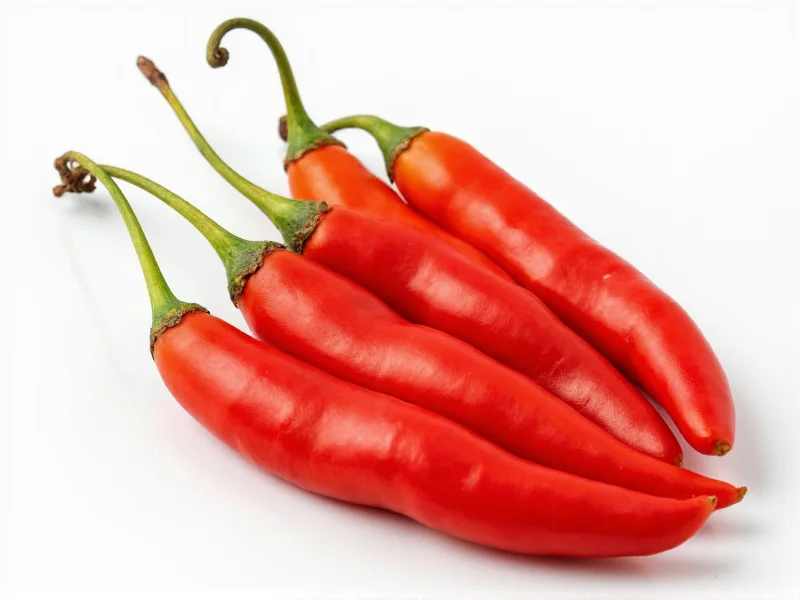Ancho chiles, the dried form of poblano peppers, offer a distinctive flavor experience that balances subtle warmth with complex tasting notes. Understanding their heat level helps home cooks and chefs incorporate them effectively in recipes without overwhelming other ingredients.
Understanding Ancho Chile Heat Level
Ancho chiles measure between 1,000-2,000 Scoville Heat Units (SHU), placing them at the lower end of the heat spectrum compared to other common chiles. To put this in perspective, they're significantly milder than jalapeños (2,500-8,000 SHU) and dramatically less intense than habaneros (100,000-350,000 SHU).
The mild heat of ancho chiles makes them exceptionally versatile in cooking. Their flavor shines through without dominating dishes, which explains why they're a staple in traditional Mexican mole sauces and other complex preparations where balance matters.
| Chile Variety | Scoville Heat Units | Heat Level |
|---|---|---|
| Ancho Chile | 1,000-2,000 | Mild |
| Jalapeño | 2,500-8,000 | Moderate |
| Serrano | 10,000-23,000 | Medium-Hot |
| Cayenne | 30,000-50,000 | Hot |
| Habanero | 100,000-350,000 | Very Hot |
Flavor Profile Beyond the Heat
While many people focus solely on the heat level of chiles, ancho peppers offer a remarkably complex flavor profile that makes them valuable in cooking. They deliver:
- Rich, earthy notes reminiscent of dried fruits
- Subtle sweetness with hints of cocoa and coffee
- Delicate smokiness from the drying process
- Floral undertones that complement other spices
Professional chefs often describe ancho chiles as providing "depth" rather than "heat" to dishes. This characteristic makes them ideal for recipes where you want chile flavor without overwhelming spiciness—perfect for family meals or when catering to varied heat preferences.
How Ancho Chiles Compare to Other Common Varieties
Understanding how ancho chiles compare to other peppers helps determine when to use them in your cooking:
Ancho vs. Jalapeño
Ancho chiles are noticeably milder than fresh jalapeños. While jalapeños deliver a sharper, more immediate heat, anchos provide a gentle warmth that builds slowly and integrates seamlessly with other flavors. The dried nature of anchos also gives them a more concentrated, complex flavor profile compared to fresh jalapeños.
Ancho vs. Pasilla
Many confuse ancho and pasilla chiles, but they're distinct varieties. Pasillas (dried chilaca peppers) run slightly hotter at 1,000-2,500 SHU and have a more pronounced smoky, raisin-like flavor. Anchos offer a fruitier, slightly sweeter profile that works better in certain mole recipes.
Ancho vs. Chipotle
Chipotles (smoked and dried jalapeños) pack significantly more heat at 2,500-8,000 SHU and deliver a much stronger smoky flavor. Anchos provide a more subtle background note that enhances rather than dominates dishes.
Practical Uses for Ancho Chiles in Cooking
The mild heat and rich flavor of ancho chiles make them incredibly versatile in the kitchen:
Traditional Mexican Dishes
Anchos form the base of many traditional Mexican sauces, particularly moles. Their mild heat allows the complex blend of spices, chocolate, and other ingredients to shine through without overwhelming heat.
Meat Rubs and Marinades
Ground ancho chile powder creates excellent rubs for meats, adding depth of flavor without excessive heat. The mild nature means you can use generous amounts to build flavor without making dishes uncomfortably spicy.
Soups and Stews
Whole or rehydrated ancho chiles add complexity to broths and stews. Simply toast the dried chiles lightly, then simmer them in your liquid to extract flavor, removing them before serving.
Sauces and Dressings
Ancho chile puree works beautifully in salad dressings, barbecue sauces, and dipping sauces where you want chile flavor without intense heat.
Handling and Preparing Ancho Chiles
Maximize the flavor of ancho chiles with these preparation tips:
- Toast before using: Briefly heat dried anchos in a dry skillet to release their aromatic oils
- Rehydrate properly: Soak in hot water for 15-20 minutes until pliable, then remove stems and seeds
- Remove seeds for milder flavor: While anchos are mild, the seeds contain concentrated capsaicin
- Grind for powder: Toasted, dried anchos make excellent homemade chile powder
Common Misconceptions About Ancho Chile Heat
Several myths persist about ancho chiles and their heat level:
"Ancho chiles aren't spicy at all"
While mild compared to many chiles, anchos do contain capsaicin and provide noticeable warmth, especially when used in quantity. Their heat builds gradually rather than hitting immediately like some hotter varieties.
"All dried chiles are extremely hot"
Drying concentrates flavors but doesn't necessarily increase heat dramatically. Anchos demonstrate that many dried chiles maintain moderate heat levels while developing complex flavor profiles.
"Ancho and poblano are interchangeable"
While anchos are dried poblanos, their flavor profiles differ significantly. Fresh poblanos have a grassier flavor and slightly higher moisture content, while dried anchos offer concentrated earthiness and sweetness.
Frequently Asked Questions
How spicy are ancho chiles compared to other common peppers?
Ancho chiles rate between 1,000-2,000 Scoville Heat Units (SHU), making them significantly milder than jalapeños (2,500-8,000 SHU) and much less intense than habaneros (100,000-350,000 SHU). They're among the mildest dried chiles commonly used in cooking.
Can children eat dishes made with ancho chiles?
Yes, ancho chiles' mild heat level (1,000-2,000 SHU) makes them suitable for family meals. Their flavor profile emphasizes rich, earthy notes rather than intense heat, allowing most children to enjoy dishes containing moderate amounts of ancho chile.
Do ancho chiles get hotter when cooked?
No, ancho chiles don't become significantly hotter when cooked. Their mild heat level remains consistent, though proper toasting can enhance their flavor complexity. The capsaicin in anchos is stable during cooking, so the heat level stays relatively constant.
What's the best way to reduce ancho chile heat in a dish?
To reduce ancho chile heat, remove the seeds and inner membranes before using them, as these contain the highest concentration of capsaicin. You can also balance the flavor with dairy products like yogurt or sour cream, or with sweet elements like honey or fruit.











 浙公网安备
33010002000092号
浙公网安备
33010002000092号 浙B2-20120091-4
浙B2-20120091-4